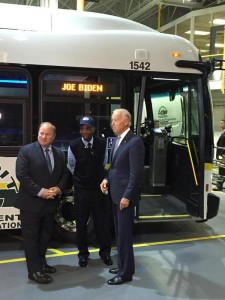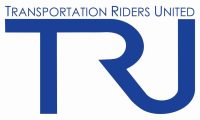One year ago, the failure of the Detroit region’s public transit system drew national and even international attention and scorn when the Detroit Free Press ran a feature story on James Robertson’s 21-mile walk to work. And rightfully so.

His commute spotlighted some of the worst gaps in our region’s public transit.
His commute required separate DDOT and SMART buses to get even part of the way from his home in Detroit to his suburban workplace. Then because our region allows towns to choose to provide no bus service, he was stuck walking eight miles each way to and from his workplace. Then after a long evening shift and a long walk back to the SMART bus, DDOT had no overnight bus service. He was stuck walking another five miles in the middle of the night to get back home.
Mr. Robertson’s plight was alleviated by thousands of generous contributors. Yet there are thousands more people much like him.
There are thousands of James Robertsons battling enormous challenges simply to get to work each day. And there are thousands of James Robertsons left stranded by buses that don’t go when or where they need.
Like thousands of people, Mr. Robertson had no other options when his car broke down and he couldn’t afford another one. Given Detroit’s highest in the nation car insurance rates, that is extremely common.
For others, a physical injury or disability leave them depending on the bus. We’re all one broken leg from not driving.
Still others are either too old or too young to drive. Also common, given that most of us will outlive our ability to drive by eight years.
The thousands of James Robertsons in our region deserve a transit system they can rely on, no matter what their reason for needing it.
I’m pleased to report that essential steps are underway to improve our region’s transit.

One of Mr. Robertson’s challenges was that no buses operated between 1am and 5am, when he needed to get home. Detroit leaders listened and recently restored 24-hour bus service on their three busiest routes. Now people who work night shifts along Woodward, Gratiot, and Grand River now have a bus available for them.
Another of Mr. Robertson’s challenges was the need to take two different buses, just to cross 8 Mile. Important steps are underway to address that challenge too. In January, DDOT and SMART presented plans to the Regional Transit Authority (RTA) to begin operating a joint cross-county express bus service on Woodward and Gratiot, minimizing the need to switch buses just to switch counties. While still under development, this new service could begin operating as early as this July.
The biggest of Mr. Robertson’s challenges was the fact that Rochester Hills has no bus service. While that appears unlikely to change in the near future, other solutions are on the horizon. The RTA was created in 2013 specifically to improve transit coordination and expand transit service. The RTA is in the midst of developing a transit master plan for the four-county region and has noted connecting to major job centers as a critical goal. The draft plan will be released this spring and funding likely decided by voters in the fall. With success, new transit service could be provided in key job centers next year. 
Our region has taken some important steps forward, yet far more remains to be done. Until then, the thousands of James Robertsons of our region will continue to struggle with the most basic travel to work and other necessities.
Hopefully our region will recognize the vital need to improve transit for the thousands of transit riders and the rest of us who depend on them. If so, this year has the potential to be the turning point for our region’s public transit to no longer be the laughing stock of the world. A good goal for 2016.
